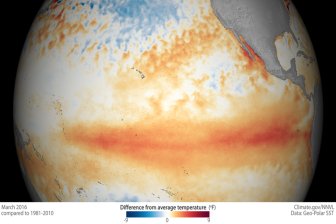Editor’s note: A previous version of this story misstated the value of reduced aerosol transmission gained by having good ventilation and air purifiers. The story has been updated to reflect the correct value, which is 10-fold.

A group of doctors, scientists and health experts is sounding the alarm after an unofficial study launched in Montreal-area schools revealed that 75 per cent of classrooms tested showed significant ventilation problems, which could favour the transmission of the novel coronavirus.
Members of the COVID-STOP group recruited 12 teachers to test air quality in close to 25 classrooms using machines known as a CO2Meter and C02Mini.
“In 3 out of 4 classes tested incognito by our teachers, ventilation was problematic and carbon dioxide levels exceeded the acceptable level of 700 to 800 parts per million (ppm), thus promoting the spread of COVID-19,” said Marie-Michelle Bellon, an internal medicine specialist in a COVID-19 unit, in a press release.
In some classrooms, the levels exceeded 2,100 ppm — close to three times the acceptable limits set by leading scientists in the field, according to COVID-STOP.
Some parents say that is unacceptable.
“I’m not a scientist. I don’t know the science behind it. All I know, as a mother, is that people need to get their act together and all parties involved need to work together to get this fixed,” said Katherine Korakakis, president of the English Parent’s Committee Association.
- ‘Bacterial vampirism’: Deadly pathogens attracted to human blood, study finds
- Shoppers faces proposed class action over claims company is ‘abusive’ to pharmacists
- Most Canadian youth visit dentists, but lack of insurance a barrier
- Landmark smoking ban that would phase out sales passes U.K. parliament
While many schools throughout Quebec have been relying on opening windows as a means of providing adequate ventilation, the onset of winter means that soon won’t be an option — not to mention that some classrooms don’t even have windows.
“We’re worried to see schools further fueling the pandemic,” Bellon said.
The COVID-STOP collective says the Quebec government needs to listen to the science and recognize that aerosol transmission of the virus is a problem.
Physicist Nancy Delagrave explained that when people breathe and talk they emit carbon dioxide, little droplets and aerosols that float in the air.
In poorly-ventilated areas, their concentration increases through accumulation. So the higher the carbon dioxide levels, the higher the potential risk for transmission of the virus.
The group behind the study, however, says the province needs to update the ventilation systems in all school and reduce limits for carbon dioxide to 800 ppm, rather than the current 1,100 ppm.
“Let’s say you have good ventilation and air purifiers, you greatly reduce the chances of getting COVID by aerosol transmission,” Delagrave said, adding it could be reduced 10-fold.
In the meantime, they hope the government will consider short-term solutions such as making masks mandatory for all grade school students and equipping teachers with carbon dioxide meters.
“What we want to do is give teachers some empowerment and some live measurement of the risk they’re putting themselves through,” Delagrave said, adding that by providing teachers with the proper tools they can adapt classroom activities when needed.
“For example, for a yoga class with the blinds down we found that this increased the level of carbon dioxide by 500 in 30 minutes,” she said, and “so it was putting the students more at risk.”
Montreal’s top doctor Mylène Drouin said she wasn’t surprised by the study’s findings, noting many schools are old and the government is already working to address the problem of poor ventilation in schools.
She also added that ventilation is only one of many factors that need to be considered.
And while Drouin agreed there’s room for improvement, she believes the measures currently in place to control the transmission of the virus in schools are adequate.
“We’re not preoccupied,” she said.
On Tuesday, Quebec Health Minister Christian Dubé said a committee has been set up to study ventilation issues and that a few meetings had already been held.
However, he said that priority would be given to health-care facilities such as long-term care homes, rather than schools.
“There was more urgency on the health side,” he said. “In certain CHSLDs (long-term care facilities) we sent people to do testing. I expect a report in the next 10 days at the latest.”
Across the province, more than 1,100 classes are closed with 3,492 active cases of COVID-19 in the school network, according the latest report from health authorities.
For its part, the Lester B. Pearson School Board isn’t waiting for the government to take action. It has already begun installing air purifiers in its buildings at a cost of $500,000.
— With files from Global News’ Felicia Parrillo and the Canadian Press’ Caroline Plante






Comments